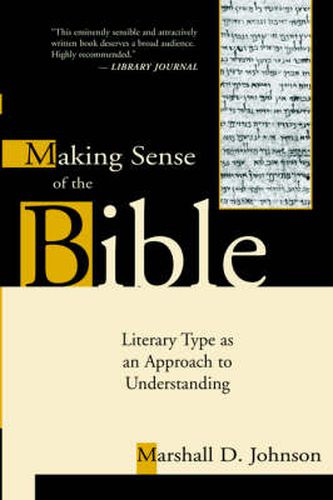Readings Newsletter
Become a Readings Member to make your shopping experience even easier.
Sign in or sign up for free!
You’re not far away from qualifying for FREE standard shipping within Australia
You’ve qualified for FREE standard shipping within Australia
The cart is loading…






No book in the Western world has evoked more diverse interpretations than the Bible. One reason for this multiplicity of interpretation is the vast historical gap lying between the writing of the Scriptures and our own time. Can ordinary persons today really make sense of this body of ancient literature? In Making Sense of the Bible Marshall Johnson gives readers the tools needed to better understand Scripture by teaching them to recognize and handle the diverse kinds of literature that make up the Bible. Focusing on the eight major literary forms in the Bible - wisdom literature, liturgical materials, quasi-historical material, prophetic writings, collections of laws and precepts, apocalyptic literature, letters, and Gospels - Johnson describes each form’s central features and gives readers a sense of what to expect from each literary form and how to approach it. In addition, helpful appendixes discuss the forms of ancient Hebrew poetry, highlight the major literary types in biblical books, and provide suggestions for further reading. For inquisitive laypeople or students in search of the original meaning of the Bible, this book provides a thoughtful, concise, and nonsectarian introduction.
$9.00 standard shipping within Australia
FREE standard shipping within Australia for orders over $100.00
Express & International shipping calculated at checkout
No book in the Western world has evoked more diverse interpretations than the Bible. One reason for this multiplicity of interpretation is the vast historical gap lying between the writing of the Scriptures and our own time. Can ordinary persons today really make sense of this body of ancient literature? In Making Sense of the Bible Marshall Johnson gives readers the tools needed to better understand Scripture by teaching them to recognize and handle the diverse kinds of literature that make up the Bible. Focusing on the eight major literary forms in the Bible - wisdom literature, liturgical materials, quasi-historical material, prophetic writings, collections of laws and precepts, apocalyptic literature, letters, and Gospels - Johnson describes each form’s central features and gives readers a sense of what to expect from each literary form and how to approach it. In addition, helpful appendixes discuss the forms of ancient Hebrew poetry, highlight the major literary types in biblical books, and provide suggestions for further reading. For inquisitive laypeople or students in search of the original meaning of the Bible, this book provides a thoughtful, concise, and nonsectarian introduction.